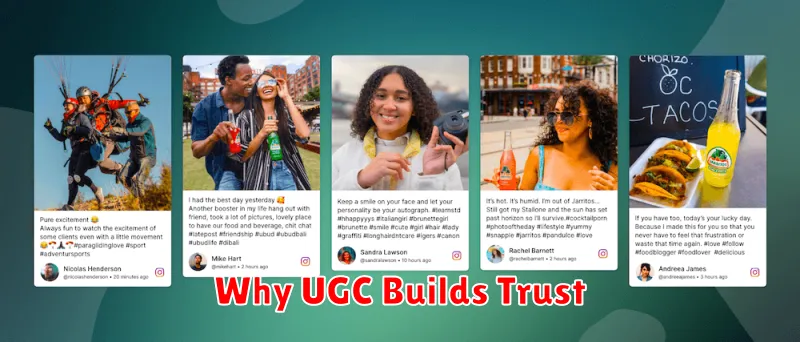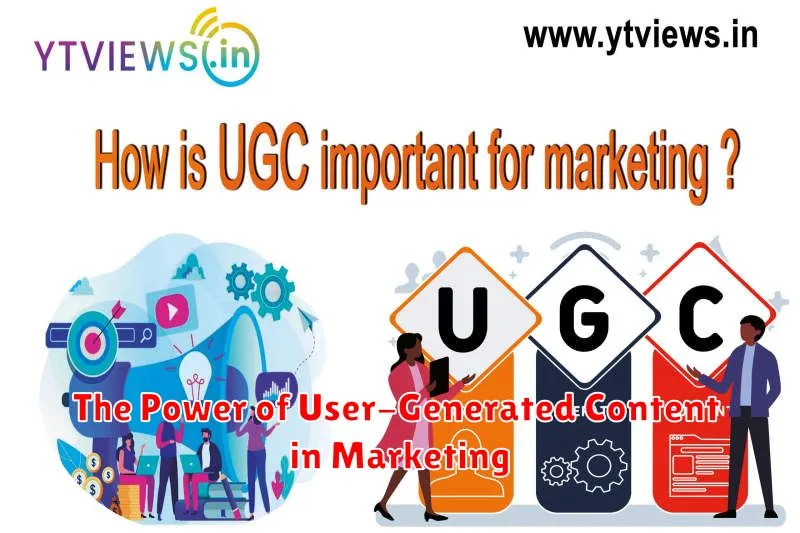In today’s digital landscape, user-generated content (UGC) has emerged as a powerful force in marketing. User-generated content offers an authentic and engaging way to connect with potential customers, build brand trust, and drive marketing success. From social media posts and online reviews to blog comments and forum discussions, UGC provides valuable insights into consumer preferences and behaviors. Harnessing the power of user-generated content allows businesses to leverage the voice of their customers and amplify their marketing messages in a way that resonates with target audiences. This makes user-generated content marketing a crucial strategy for businesses looking to thrive in the competitive digital marketplace.
This article explores the transformative impact of user-generated content on marketing strategies. We will delve into the numerous benefits that user-generated content provides, including increased brand credibility, improved customer engagement, and cost-effective marketing reach. We will also examine various strategies for effectively incorporating user-generated content into marketing campaigns, maximizing its potential to drive conversions and foster brand loyalty. Understanding the power of user-generated content is essential for any business seeking to strengthen its marketing efforts and connect with consumers on a deeper level. Therefore, exploring the power of user generated content in marketing becomes paramount to any contemporary marketing strategy.
What Is User-Generated Content?
User-generated content (UGC) refers to any form of content created by users of a product or service, rather than by the brand itself. This content can take various forms, including reviews, testimonials, social media posts, images, and videos. It’s typically shared publicly online and reflects the users’ genuine experiences and opinions.
UGC is considered highly valuable because it offers authentic insights and builds trust among potential customers. It differs significantly from brand-created content, which can sometimes feel less genuine or objective.
Why UGC Builds Trust

In today’s marketing landscape, consumers are increasingly skeptical of traditional advertising. User-generated content (UGC) offers a powerful antidote. It fosters trust because it comes directly from fellow consumers, individuals perceived as more relatable and less biased than brands themselves. This authenticity resonates deeply, influencing purchase decisions and shaping brand perception.
UGC provides social proof, demonstrating that real people are using and enjoying a product or service. This organic endorsement holds significant weight, particularly for new customers researching their options. It establishes credibility and reduces perceived risk, encouraging potential buyers to take the leap.
Examples of UGC Campaigns
Starbucks’ #WhiteCupContest encouraged customers to doodle on their Starbucks cups and share photos on social media. This campaign generated massive engagement and free publicity.
GoPro regularly features user-submitted videos and photos on their social media channels and website. This showcases the versatility of their products and builds a strong community around the brand.
T-Mobile’s #UnlimitedMoves campaign invited users to share videos showcasing their talents, with the best submissions featured in a commercial. This generated a wealth of creative content and reinforced the “unlimited” brand message.
Encouraging Customers to Contribute
Motivating customer participation is key to a successful user-generated content (UGC) strategy. Incentivizing contributions can be highly effective. This can include offering discounts, running contests, or featuring top contributors.
Making contribution easy is also crucial. Streamlined submission processes, clear guidelines, and readily available platforms encourage higher participation rates. Promote opportunities to contribute through multiple channels to maximize reach and engagement.
Legal Considerations for UGC
Integrating user-generated content (UGC) into marketing strategies requires careful attention to legal aspects. Copyright infringement is a key concern. Ensure you have the necessary rights and permissions to use the content. Clearly outline usage terms and obtain explicit consent from creators.
Privacy rights are also paramount. Avoid using content that reveals personally identifiable information without proper authorization. Additionally, consider disclosure requirements related to sponsored UGC and influencer marketing. Transparency is crucial to maintain consumer trust.
How to Curate and Feature UGC
Effectively leveraging user-generated content (UGC) requires careful curation. Start by actively monitoring your brand mentions and relevant hashtags across social media platforms.
Seek content that aligns with your brand values and resonates with your target audience. Look for high-quality visuals and engaging captions. Always request permission from the original creator before reposting or featuring their content.
Showcase curated UGC on your website, social media channels, and even in email marketing campaigns. Consider creating dedicated UGC galleries or social media feeds. Properly attribute the content to the original creator by tagging their username and giving them credit.
Measuring UGC Impact on Sales
Accurately gauging the impact of user-generated content (UGC) on sales can be challenging but crucial. Key performance indicators (KPIs) offer valuable insights. Track metrics such as conversion rates on product pages featuring UGC, and the average order value (AOV) of purchases influenced by UGC.
Analyze website traffic originating from social media platforms where your UGC is shared. Furthermore, monitor engagement metrics like shares, comments, and likes associated with UGC. These indicators can provide a comprehensive view of how UGC contributes to your bottom line.
Integrating UGC in Email and Ads
Leveraging user-generated content (UGC) in email marketing and online advertising can significantly enhance your campaigns. Authenticity is key, and UGC provides that in spades. Incorporating customer testimonials, reviews, and photos into your emails builds trust and encourages engagement.
Similarly, using UGC in ads, particularly on social media platforms, can boost conversion rates. Seeing real people endorse your product or service resonates more deeply with potential customers than polished, corporate messaging. This social proof helps build credibility and drives purchase decisions.
Tools to Collect and Manage UGC
Several tools simplify the process of collecting and managing user-generated content. Social listening platforms help monitor brand mentions and identify potential UGC. Hashtag aggregators gather content based on specific campaign hashtags, making collection straightforward. Content curation tools allow you to organize and categorize collected UGC, streamlining the management process. These tools offer valuable features like content rights management and analytics, making it easier to leverage UGC effectively.
Case Studies of Viral UGC
User-Generated Content (UGC) can significantly impact brand reach and engagement when it goes viral. Examining successful campaigns offers valuable insights.
One example is the ALS Ice Bucket Challenge. This challenge encouraged users to film themselves dumping ice water over their heads and nominate others to do the same, raising awareness and funds for ALS research. The widespread participation generated massive media attention and donations.
Another notable case is GoPro’s user-generated content strategy. GoPro encourages customers to share their adventures captured using GoPro cameras. The compelling visuals and authentic experiences shared by users have become central to the brand’s marketing, driving both product awareness and desire.

